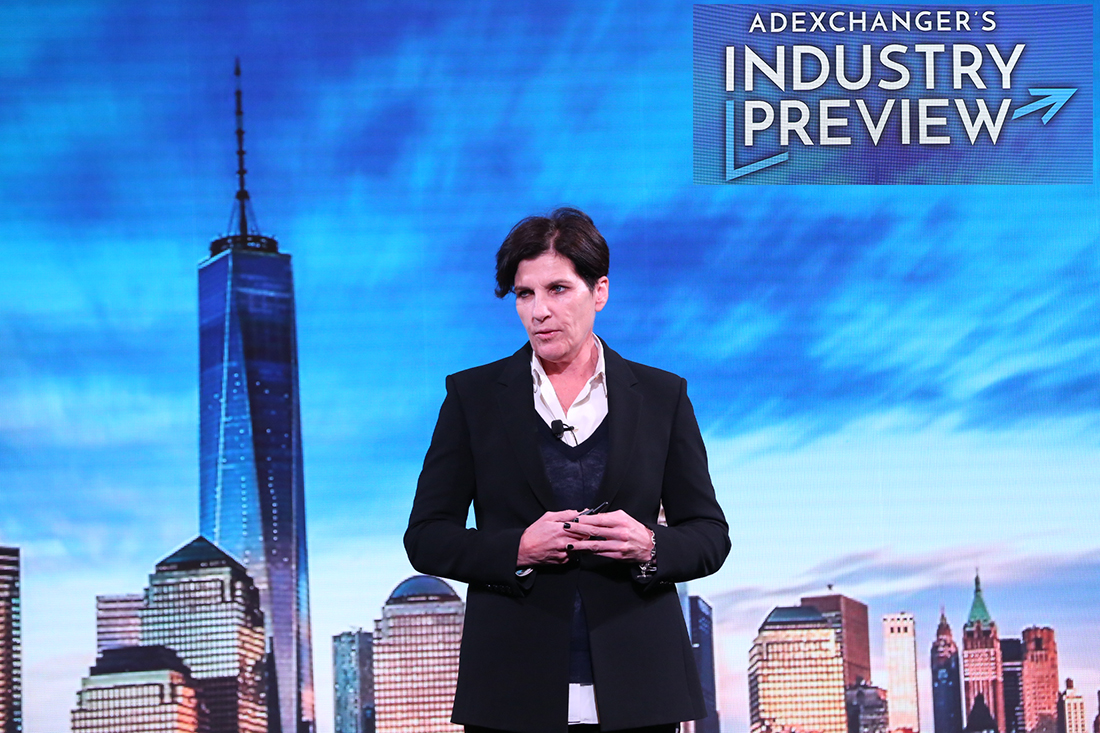
At this year’s AdExchanger’s Industry Preview in New York City, top industry leaders in marketing and advertising technology came together to discuss the most critical visions for advertising in 2019. Nielsen was front and center as a primary sponsor of the two-day symposium, further establishing us as a leading authority in data-driven marketing and measurement. On the second day of the conference, Megan Clarken, Chief Commercial Officer, Nielsen Global Media, gave a keynote titled “Transforming Marketing Measurement,” that argued how 2019 should be the year that the industry doubles down on high-quality metrics to prove its value.
In the U.S., the average person consumes over 82 hours of media a week via multitasking (not in a row), a trend that will continue to grow in ways we never thought possible. In order to further grasp the opportunity in the current video landscape, particularly the growth of mobile video, marketers need to understand how people engage with video across screens in a comparable way rather than understanding segmented engagement with TV or digital. From there, market players can think about monetization, which Megan categorized in four content monetization models:
- Traditional/reach advertising: Linear buys
- Targeted advertising: Audience buys
- SVOD: Subscription model (no ads)
- Branded integration: Product placement
Traditional/reach and targeted advertising are the most debated and high-profile advertising channels in the marketplace today, yet they represent a fraction of marketers’ overall spend. To illustrate, Megan projected a slide highlighting how 15%-20% of marketing spend from both a traditional FMCG and auto brand go toward advertising, while 80%-85% go toward trade promotion and incentives, largely because proving ROI from digital spend remains a significant hurdle across industries.
In order to cut through the confusion and gain access to a more significant piece of the advertising pie, Megan emphasized the importance of better understanding walled gardens, defined as environments where all operations are controlled by their respective media owners. Unfortunately, they often lead to the development of inconsistent measurement across the media landscape.
“There has been a lot of argument over what is the currency metric,” Megan said. “It starts with understanding the base metric. We believe it’s reach and frequency. It’s how many people saw it and how often did they see it. It’s not really about how long they saw it for or ROI, it’s just a real estate number. Consolidating reach and frequency is the root of all measurement, and the most important base upon which the marketplace can trade and marketers can unlock more spend.” Foundational metrics such as these are essential because they establish the accurate universe for an audience. Once you have this foundation you create additional metrics on top, such as advanced audiences ROI, engagement, etc.
These three scenarios reinforce why employing comparable metrics with reach and frequency at the base is crucial for industry cohesion and growth:
Scenario 1 – Each Vendor Measuring Itself
The first environment is close to what we have today, but it’s one that we need to avoid because it disables de-duplication of audiences across the marketplace.. She also said it also hinders consistency, cross-market comparability, transparency and independent measurement-hence creating waste.
Scenario 2 – Different Outcomes: Multiple Measurement Approaches
The second scenario would reflect today’s environment if independent measurement companies are leveraged. The problem with this model, however, is that each vendor’s measurement wouldn’t accurately compare with others, de-duplication would be lost, and ROI or brand lift couldn’t be measured.
Scenario 3 – Comparable Metrics to Monetize
This model is the ideal environment for consistency across the marketplace because one set of metrics would measure the base piece, reach and frequency. It could also compare to others, allowing a true value of sales effectiveness, multi-touch attribution, and engagement brands need to differentiate themselves. It can de-duplicate audiences across platforms with consistent, metrics to monetize, as well as nurturing an ecosystem with different players. That said, it’s necessary in order for the marketplace to work together.
Nielsen’s very own vBrand, a recent acquisition, uses machine-learning technology to consistently measure reach and frequency across platforms for branded integrations. Additionally, vBrand serves as a trading desk for how marketers value promotions and sponsorships inside of sports, and it measures the reach of brands across social media sites.
Since this functionality actually exists today, the challenge for the industry lies in the willingness and courage to participate more than anything else.The bottom line: there is no reason why it can’t be expanded to the industry to use across the marketplace, but we all need to lean in to make it happen.
